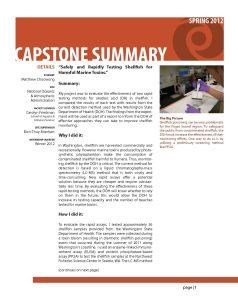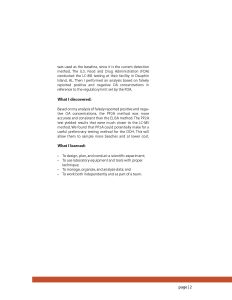Safely and Rapidly Testing Shellfish for Harmful Marine Toxins
My project was to evaluate the effectiveness of two rapid testing methods for okadaic acid (OA) in shellfish. I compared the results of each test with results from the current detection method used by the Washington State Department of Health (DOH). The findings from the experiment will be used as part of a report to inform the DOH of effective approaches they can take to improve shellfish monitoring.
In Washington, shellfish are harvested commercially and recreationally. However marine toxins produced by photo- synthetic phytoplankton make the consumption of contaminated shellfish harmful to humans. Thus, monitoring shellfish by the DOH is critical. The current method for detection is based on a liquid chromatography-mass spectrometry (LC-MS) method that is both costly and time-consuming. New rapid assays offer a potential solution because they are cheaper and require substantially less time. By evaluating the effectiveness of these rapid testing methods, the DOH will know whether to rely on them in the future; this would allow the DOH to increase its testing capacity and the number of beaches tested for marine toxins.

